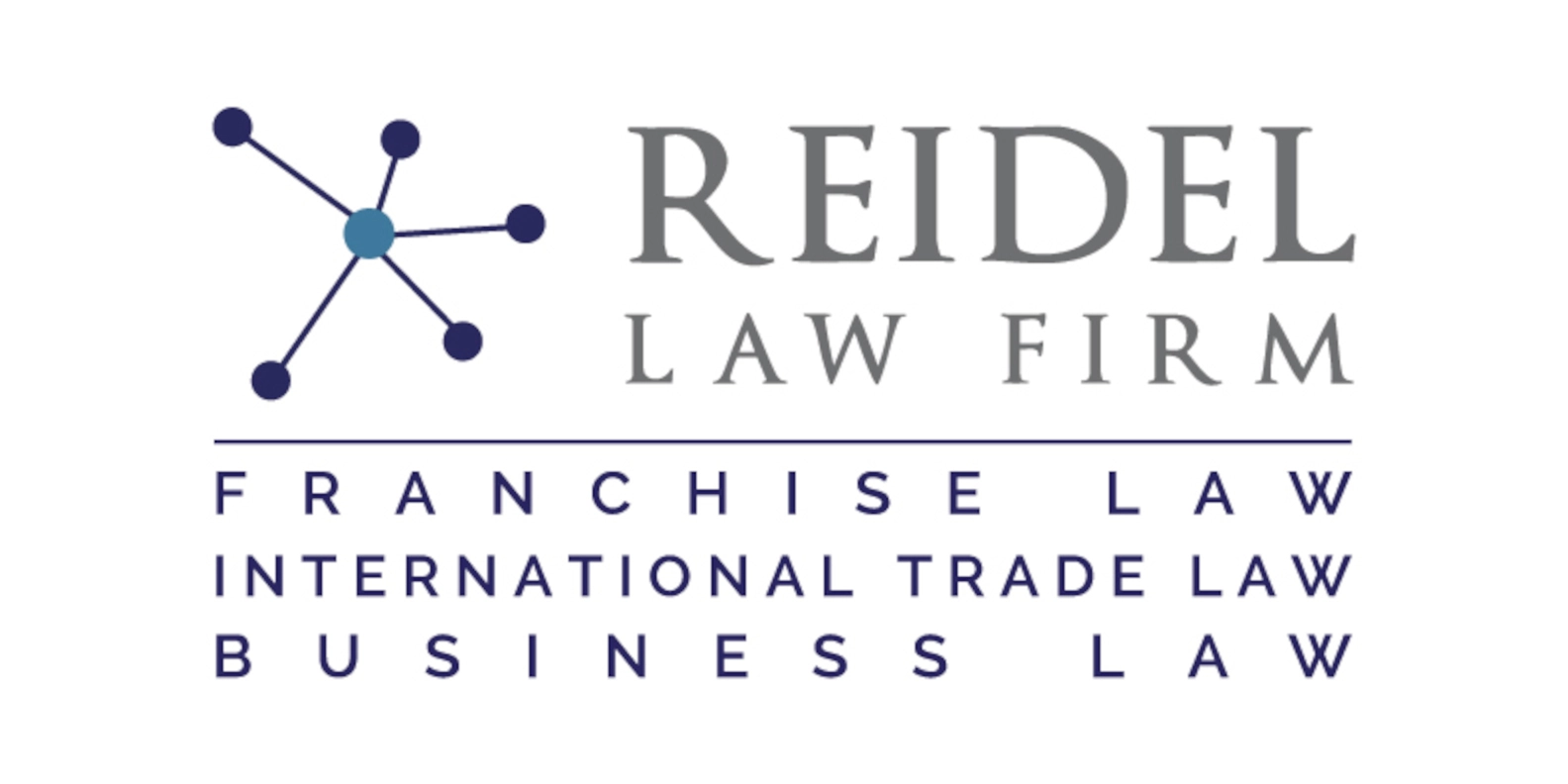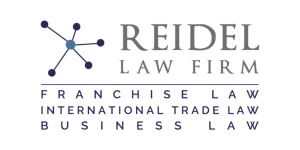Drafting a purchase agreement for buying or selling a business in Texas is essential for a smooth transaction. This article will outline the key elements and specific considerations for Texas law to help you create a comprehensive agreement.
Key Takeaways
A well-drafted business purchase agreement in Texas is essential for clearly defining the terms, assets, payment methods, and legal obligations, thus protecting the interests of all involved parties.
Key elements of a business purchase agreement include explicit identification of the buyer and seller, a comprehensive description of business assets, clear definitions of purchase price and payment terms, and inclusive representations and warranties.
Conducting thorough due diligence, including financial, legal, and physical inspections, and establishing indemnification clauses and non-compete agreements are critical in ensuring a smooth and legally compliant business transaction.
Drafting a Purchase Agreement for Buying or Selling a Business in Texas: Essential Tips

Creating a purchase agreement is a fundamental part of buying or selling a business in Texas. A well-drafted agreement provides clarity on terms, assets, and liabilities, and ensures legal enforceability. This clarity is essential as it protects the interests of all parties involved by clearly defining their rights, responsibilities, duties, and liabilities.
In the creation of a business purchase agreement, clear identification of the seller and buyer is paramount. This identification is crucial to determine ownership and authority over the business and whose consent must be obtained. Additionally, the agreement must specify the sales price, the payment methods, and identify the business to be sold. The sales price can be paid in various ways, such as cash deals, third-party lender financing, or seller financing.
Both buyers and sellers need to grasp the vital components of a business purchase agreement. It helps create a comprehensive record of the transaction, ensuring that all terms and conditions are clearly defined and agreed upon by both parties.
A well-constructed purchase agreement is the cornerstone of a seamless and successful business transaction in Texas, whether you are acquiring the assets of the enterprise or the entity itself.
Introduction
Buying or selling a business in Texas involves navigating a labyrinth of legal intricacies. It’s not just about finding a buyer or seller; it’s about ensuring that every aspect of the transaction is meticulously documented and legally sound. The purchase and sale agreement is the heart of this process, binding all parties to the terms and conditions of the deal.
Dealing with the intricate legal aspects is essential to protect your investment and ensure seamless operations. A well-crafted business purchase agreement serves as a contract between the business owner and the buyer, transferring rights and ownership in the business entity. This agreement ensures that both parties are on the same page, reducing the risk of future disputes and ensuring a smooth transition of ownership.
Asset Purchase Agreement Checklist
1. Parties and Recitals
Identify the buyer and seller, and include a brief background of the transaction. This section sets the stage for the entire agreement, establishing who’s involved and why.
2. Definitions
Define key terms used throughout the agreement to ensure clarity and consistency. This section is crucial for preventing misunderstandings and potential disputes later.
3. Purchase and Sale of Assets
Clearly describe the assets being sold, list any excluded assets, and specify the purchase price and payment terms. This is the core of the agreement, detailing what’s being transferred and for how much.
4. Liabilities
Identify assumed liabilities and specify excluded liabilities. This section is critical for protecting the buyer from unexpected obligations and clearly delineating responsibilities post-transaction.
5. Closing
Set the closing date and location, and list documents to be delivered at closing. This section outlines the final steps of the transaction and ensures all necessary paperwork is prepared.
6. Representations and Warranties
Include both seller’s and buyer’s representations and warranties. These are legally binding statements about the condition of the business and the authority to enter into the agreement.
7. Covenants
Outline pre-closing and post-closing covenants. These are promises made by both parties about their conduct before and after the sale, crucial for a smooth transition of ownership.
8. Conditions to Closing
Specify conditions for both buyer’s and seller’s obligations to close. This section protects both parties by ensuring all necessary conditions are met before the sale is finalized.
9. Indemnification
Detail indemnification obligations for both parties and procedures for claims. This section provides protection against future claims or losses related to the transaction.
10. Termination
Outline circumstances allowing termination and the effects of termination. This section provides an exit strategy if the deal cannot be completed as planned.
11. Miscellaneous Provisions
Include governing law, dispute resolution, notices, amendments, and other standard clauses. These provisions cover various legal aspects and ensure the agreement is comprehensive and enforceable.
Importance of a Business Purchase Agreement

A business purchase agreement is more than just a formality; it acts as a pivotal document assuring a seamless transition of ownership from the seller to the buyer. It specifies the conditions for conducting the sale or purchase of a business, aligning both buyer and seller on their roles, providing transparency, and reducing potential conflicts. By defining terms and conditions, a well-drafted agreement helps protect the interests of all involved parties.
One significant aspect of a business purchase agreement is the unequivocal identification of the buyer, seller, and the business on sale. This ensures clarity on ownership, authority, and consent required to transfer the business. Buyers can structure the purchase as an asset acquisition, an entity acquisition, or a combination of both, including business acquisitions involving different assets and entities. An asset purchase is often preferred by buyers to avoid potential hidden liabilities, while an entity purchase may be preferred for benefits like existing credit ratings and vendor accounts.
The mutually agreed sales price can be paid through several methods, which include full cash payment, partial cash payment with financing, or solely through seller financing. Payment terms should be clearly specified, and the agreement may be contingent upon obtaining financing approval from a third-party lender. Business transactions are generally more complex and costly compared to real estate transactions, necessitating the engagement of professional advisors to navigate the intricacies involved and ensure a successful deal.
Confidentiality during the due diligence phase is also critical, and sensitive information exchanged should be safeguarded by confidentiality covenants in the agreement.
Key Elements of a Business Purchase Agreement
A detailed business purchase agreement includes a range of crucial elements, safeguarding the interests of both parties. These elements include the identification of parties involved, a detailed description of business assets, and the purchase price and payment terms.
Additionally, the agreement should cover representations and warranties, indemnification clauses, and a thorough due diligence process. By addressing these key elements, the agreement provides a solid foundation for a successful business transaction.
Parties Involved
A fundamental aspect of a business purchase agreement is the explicit identification of the involved parties. This involves ascertaining the identity of both the seller and the buyer to determine who actually owns the enterprise, who has the authority to speak for and convey the business, and whose consent must be obtained. The names and locations of the buyer, seller, and the business being sold should be included in the agreement.
Establishing the parties’ identities in the agreement is crucial to avoid potential conflicts down the line. Buyers can also make representations and warranties, such as having the necessary capital and authority to purchase the business. By clearly defining the parties involved, the agreement ensures that both the buyer and the seller are on the same page, paving the way for a smooth transaction.
Description of Business Assets
In an asset sale, clearly listing the specific assets for transfer and exclusion is crucial. The business purchase agreement should detail physical assets such as real estate, vehicles, inventory, equipment, buildings, and business contracts. The purchase agreement can also function as a contract for conveying real property if the business owns it. This dual role simplifies the legal process.
Certain business’s assets, such as:
cash
bank balances
accounts receivable
can be excluded from the business purchase agreement. Additionally, the agreement should detail intangible assets such as intellectual property. By clearly defining the business’s assets, the agreement ensures that both parties have a mutual understanding of what is being transferred, thereby preventing potential disputes.
Purchase Price and Payment Terms
Setting the purchase price is a vital part of any business sale. The purchase price can be determined as a total amount or as a price for each share if the transaction involves a sale of shares. Payment methods for a business sale can include cash deals, third-party lender financing, and seller financing. The sales price can be paid in various ways, such as in cash, partly in cash and partly by bank or SBA financing, or through seller financing. This provides flexibility for the buyer to choose the most suitable payment option.
When providing seller financing, the seller may wish to include provisions to protect ongoing interests, such as the right to inspect the business and its records or a due-on-sale clause. Third-party financing often requires making the agreement contingent upon obtaining financing approval. The business purchase agreement should outline whether the purchaser will pay a lump sum or with a Promissory Note. Clearly defining the purchase price and payment terms helps ensure that both parties have a mutual understanding of the financial aspects of the deal.
Representations and Warranties
Business purchase agreements necessitate representations and warranties because they furnish guarantees from both parties about the business’s state and confirm each party’s ability to partake in the sale. These assurances create a basis for legal recourse if any guarantees made are unsubstantiated.
The seller’s typical representations may cover assurances of:
authority to enter into the transaction
declarations of good and marketable title to the assets
absence of pending or threatened litigation
currency of liens and liabilities
Buyers might expect sellers to provide warranties related to the following:
The condition of assets
Legal compliance
Financial disclosures
Employee matters
Representations and warranties clauses generally remain effective even after the transaction closing date, ensuring ongoing transparency and legal compliance. By including thorough representations and warranties, the agreement provides both parties with the confidence needed to proceed with the transaction.
Indemnification Clauses
Indemnification clauses serve a key function in shielding both parties from potential financial damage resulting from unexpected liabilities or contract violations. These clauses commit one party to cover costs for losses or damages suffered by another party. Establishing a risk management framework through indemnification clauses benefits both parties. Indemnification can include monetary payments, repairs, or replacements.
Common types of indemnification clauses include bare indemnities, reverse indemnities, and third-party indemnities. These clauses often address breaches of representations, warranties, and covenants. Negotiating indemnification clauses involves setting firm caps on liability and limiting the scope to controllable factors. By clearly defining indemnification terms, the agreement provides a safety net for both parties, reducing the risk of financial loss.
Due Diligence Process
The due diligence process is a crucial phase in any business transaction, enabling buyers to gain a comprehensive understanding of their commitment and aiding in the prevention of unforeseen complications related to the business’s value or operation post-purchase. This process involves examining the business’s financial health, identifying liabilities, and assessing legal risks.
Due diligence typically includes:
Physical inspections
Examination of books and records
Business appraisal
Environmental assessment
By conducting thorough due diligence, buyers can make informed decisions and mitigate potential risks.
Financial Records
Examining pivotal financial documents is a crucial component of the due diligence process. Documents such as tax documents, financial statements, and business contracts should be gathered to understand the value of the business. Important documents to examine include the balance sheet, income statements, and tax returns.
It is critical to review the financial records dating back over the last five years, especially considering the scrutiny of the Internal Revenue Service. This historical data provides a comprehensive view of the business’s financial health, helping buyers identify any red flags and make informed decisions about the purchase.
Legal Compliance
Compliance with all legal requirements is another key element of the due diligence process. During this phase, it is essential to examine all legal documents related to the business to ensure full regulatory compliance. Confidential information revealed during due diligence must remain confidential and should be protected by a covenant in the agreement.
By ensuring legal compliance, buyers can reduce the risk of liabilities and ensure a smooth transition of ownership for limited liability companies.
Non-Compete Agreements
Non-compete agreements serve a crucial function in business sales by protecting the buyer’s financial interests. They prevent the seller from engaging in competition with the business they have sold. These agreements typically define the scope of restricted activities and the duration of these restrictions. By preventing sellers from engaging in business activities that directly compete with the purchased enterprise after the sale, non-compete agreements provide the buyer with time to stabilize their market position without immediate competitive threats from the seller.
Geographical areas covered in a covenant not to compete in the Houston area might include Harris, Fort Bend, and Montgomery counties. Including a well-defined non-compete agreement in the business purchase agreement helps safeguard the buyer’s investment and ensures a smooth transition of ownership.
Closing Documents and Procedures
In a business sale, the closing process is the concluding stage where the buyer makes the payment for the company, and the seller relinquishes control. This phase involves preparing and finalizing essential documents, such as bills of sale, lease assignments, and titles. Ensuring all necessary consents and approvals are obtained before closing is crucial to avoid any legal complications.
A business lawyer can assist in this process, ensuring all documents are in order and the transaction proceeds smoothly.
Preparation of Closing Documents
The detailed process of preparing closing documents entails the creation of critical paperwork such as bills of sale, lease copies, contracts with customers and suppliers, and intellectual property agreements. Various exhibits and attachments, such as deeds, inventory of personal property, and a list of liabilities, often accompany the purchase agreement.
Additional agreements, such as non-disclosure agreements, non-compete agreements, and arrangements for the seller to remain as an employee, may also be part of the business sale documents. Engaging a business lawyer to draft, negotiate, and review these documents is crucial to ensure that all aspects of the transaction are legally sound.
Finalizing the Transaction
The formal transfer of control from the seller to the buyer occurs when finalizing the transaction. This phase includes signing the closing documents, having them notarized, and closing business bank accounts. Regulatory compliance requires securing necessary approvals from relevant agencies for business transfers.
During the final steps, the seller turns over business assets if it’s an asset sale. For the agreement to be legally binding, it is necessary for both the buyer and seller to provide their signatures. This step is essential to finalize the agreement. A skilled attorney ensures that everything goes smoothly, avoiding critical mistakes while negotiating the purchase or sale.
Post-Transaction Considerations
Following the transaction’s completion, a number of post-transaction activities are vital to guarantee a seamless transition and integration of the acquired business. These activities include notifying creditors, customers, suppliers, and employees of the ownership change. Engaging professionals like attorneys and CPAs can significantly aid in mitigating risks during this phase.
A well-structured business succession plan is essential for effectively transferring ownership and management duties.
Transition Planning
During a change in ownership, a well-devised transition strategy is essential to maintain continuous business operations and services. Stipulating the transition timeframe in the business purchase agreement helps mitigate confusion and conflicts, making the transition process more effective and efficient.
A detailed transfer plan should define responsibilities following the closure, including the involvement of the former owner and the onboarding of new personnel. Previous owners often provide support during the transition period and remain involved in business operations for an agreed-upon duration. This level of involvement is typical in business transitions.
Ensuring the buyer obtains all necessary permits and licenses before finalizing the transaction is also essential.
Integration of Business Operations
Establishing a unified framework for business operations guarantees an uninterrupted operational flow and forms a firm foundation for expansion. Strategic integration aims to enhance operational efficiency and drive growth by leveraging the collective strengths of established and newly merged businesses. This approach facilitates a seamless combination of resources and expertise to optimize overall performance.
Tech solutions can streamline communication and data migration, ensuring smooth integration of business operations. By establishing a cohesive operations framework, the new owner can effectively manage the transition and continue to grow the business.
Benefits of Hiring a Business Lawyer
Hiring a business lawyer offers significant benefits in facilitating a seamless transaction, proper documentation, and legal compliance. A business lawyer can help with:
Drafting and reviewing sale documents to ensure they are correctly drafted and legally binding
Providing objective advice on all legal aspects of the transaction
Ensuring that nothing is left to chance and all necessary legal steps are taken
By hiring a business lawyer, you can prevent future disputes and ensure a smooth and legally compliant transaction.
It is generally not advisable to allow the title company attorneys to prepare documents for the sale of a business, as they represent the title company and may not draft documents comprehensively in the best interest of the buyer or seller. A business lawyer ensures that all aspects of the transaction are properly covered, significantly aiding in negotiating, drafting, and closing the transaction. This not only safeguards your rights but also facilitates a smooth and successful business sale or acquisition.
Summary
In conclusion, a well-drafted business purchase agreement is the cornerstone of buying or selling a business in Texas. It ensures that all parties are protected, terms are clearly defined, and the transaction proceeds smoothly. From identifying parties and describing business assets to determining the purchase price and payment terms, every element plays a critical role in the success of the deal.
By engaging professionals like business lawyers and conducting thorough due diligence, you can significantly mitigate risks and ensure a successful transition. Whether you are a buyer or a seller, understanding the importance and intricacies of a business purchase agreement will help you navigate the complexities of business transactions with confidence and clarity.
Frequently Asked Questions
What is a business purchase agreement?
A business purchase agreement is a contract that outlines the terms and conditions for the sale or purchase of a business, ensuring clarity and minimizing conflicts between the buyer and seller.
Why is it important to identify the parties involved in a business purchase agreement?
It is important to identify the parties involved in a business purchase agreement to determine ownership and authority over the business and prevent potential conflicts.
What are representations and warranties in a business purchase agreement?
Representations and warranties in a business purchase agreement are assurances from both parties regarding the business’s condition and their capacity to engage in the sale. They provide a basis for legal recourse if the guarantees made are unsubstantiated.
What role do indemnification clauses play in a business purchase agreement?
Indemnification clauses in a business purchase agreement protect both parties from financial harm due to unforeseen liabilities or breaches of contract by committing one party to cover costs for losses or damages suffered by the other party.
Why should I hire a business lawyer for buying or selling a business?
Hiring a business lawyer for buying or selling a business is crucial as they help prevent future disputes by ensuring all sale documents are correctly drafted and legally binding. They offer objective advice and significantly aid in negotiating, drafting, and closing the transaction, thus safeguarding your rights and facilitating a smooth transaction.



